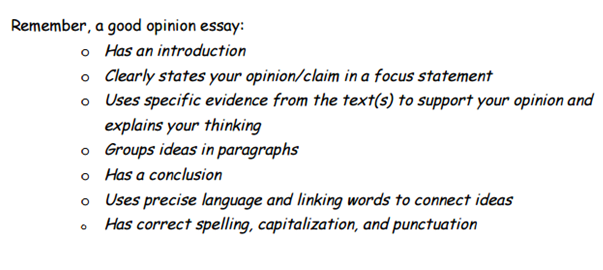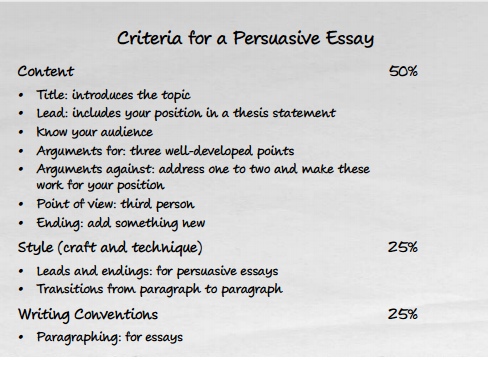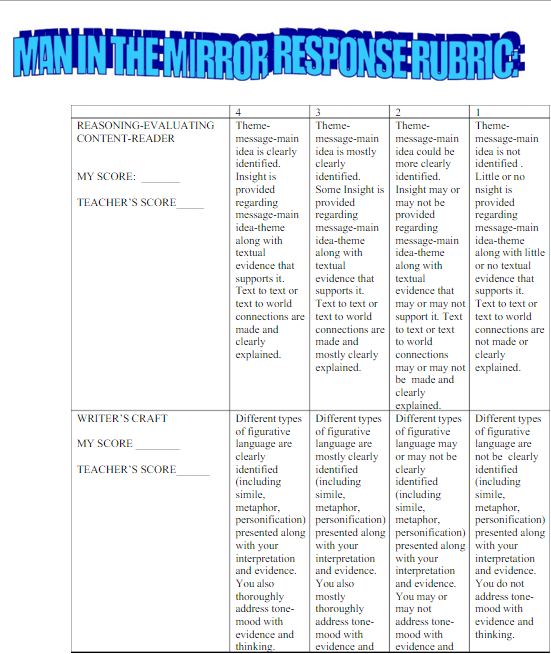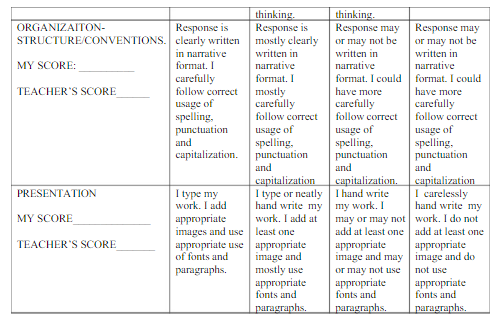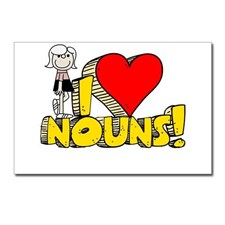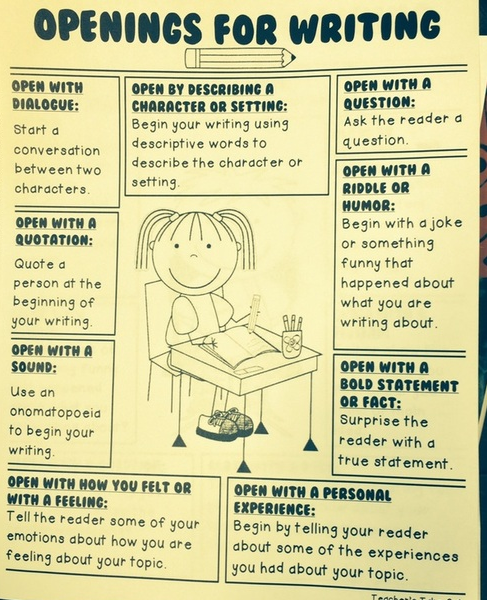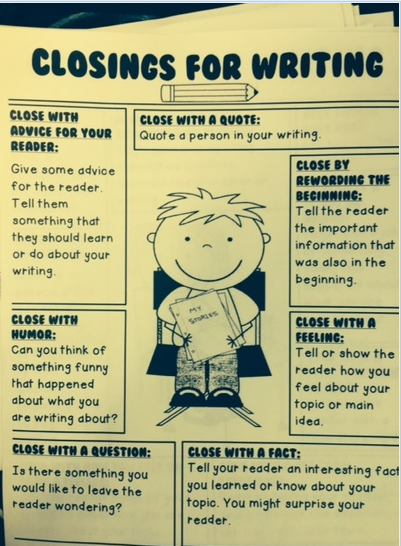SOLUTIONARY ESSAYS:
YOU WILL WRITE EITHER A FIVE PARAGRAPH PERSUASIVE OPINION ESSAY ON YOUR SOLUTIONARY ISSUE OR A MORE ADVANCED ESSAY THAT INCORPORATES ELEMENTS FROM THE GLOBAL ESSAY MENTOR TEXT. EITHER WAY YOU WILL USE THE RUBRIC, CHECKLIST, OREO GRAPHIC ORGANIZER AND MORE TO CONSTRUCT YOUR ESSAY. REVIEW THIS WEBSITE FOR ASSISTANCE AND TIPS:
GIVE YOUR TEAM A CATCHY NAME THAT CONNECTS TO YOUR ISSUE.
COME UP WITH A ONE TO TWO SENTENCE MISSION STATEMENT FOR YOUR GROUP….WE ARE ____________ THAT WILL __________________ BY
____________________________
OUR NEXT STEPS:
RIGHT NOW: WE ARE –IDENTIFY WHAT YOU-GROUP MEMBERS ARE DOING. YOU MAY USE BULLETS.
SIX MONTHS: THIS IS WHAT WE ENVISION HAPPENING AND HOW WE HOPE TO DO IT.
A YEAR LATER:
https://www.brainpop.com/english/writing/criticalreasoning/
GIVE YOUR TEAM A CATCHY NAME THAT CONNECTS TO YOUR ISSUE.
COME UP WITH A ONE TO TWO SENTENCE MISSION STATEMENT FOR YOUR GROUP….WE ARE ____________ THAT WILL __________________ BY
____________________________
OUR NEXT STEPS:
RIGHT NOW: WE ARE –IDENTIFY WHAT YOU-GROUP MEMBERS ARE DOING. YOU MAY USE BULLETS.
SIX MONTHS: THIS IS WHAT WE ENVISION HAPPENING AND HOW WE HOPE TO DO IT.
A YEAR LATER:
https://www.brainpop.com/english/writing/criticalreasoning/
PERSUASIVE ESSAY CHECKLIST:
| persuasive_essay_checklist.docx | |
| File Size: | 84 kb |
| File Type: | docx |
Your browser does not support viewing this document. Click here to download the document.
MENTOR TEXTS:
Your browser does not support viewing this document. Click here to download the document.
| schoolyearsampleessay.docx | |
| File Size: | 115 kb |
| File Type: | docx |
Your browser does not support viewing this document. Click here to download the document.
| globalwarmingessaysample.docx | |
| File Size: | 254 kb |
| File Type: | docx |
OREO GRAPHIC ORGANIZER:
Your browser does not support viewing this document. Click here to download the document.
| oreoopinionwritinggraphicorganizer__1_.pdf | |
| File Size: | 774 kb |
| File Type: | |
RUBRIC:
| fourthgrade_persuasive_writing_task_1_rubric_2012-2013.docx | |
| File Size: | 15 kb |
| File Type: | docx |
ESSAY REMINDERS:
SOLUTIONARY CONGRESS SONG LYRICS:
| man_in_the_mirrorhealtheworld.docx | |
| File Size: | 99 kb |
| File Type: | docx |
INTRODUCTION TO MYTH WRITING: HOW DO MYTHS HELP EXPLAIN A NATURAL PHENOMENON AND HOW CAN I CREATE MY OWN?
http://teacher.scholastic.com/writewit/mff/myths_mymyth.htm
Teach: A myth is a made-up story that explains the existence of a natural phenomenon — such as where thunder comes from or why snow falls from the sky. Myths — which often include gods and goddesses and other supernatural characters who have the power to make extraordinary things happen — are popular even when people know the actual reasons for natural phenomena.
Review different types of folklore: How can I tell the difference between a myth, legend, fable, folktake and tall tale? https://www.myhaikuclass.com/pjhawkey/home/cms_page/view/3868750
FIND MORE NATIVE AMERICAN MYTHS HERE: http://nativeamericans.mrdonn.org/stories/
AND HERE: http://www.apples4theteacher.com/native-american/short-stories/
AND HERE: http://www.apples4theteacher.com/native-american/short-stories/
PART ONE: READ AT LEAST TWO MYTHS. WRITE DOWN THE LINKS. SUMMARIZE EACH MYTH USING SWBST MODEL AND WRITE THE MORAL OR LESSON IT TEACHES. DECIDE WHAT NATURAL PHENOMENON YOU WANT TO RESEARCH AND TELL WHY YOU WANT TO WRITE ABOUT IT.
PART TWO:
1. Pick out the natural phenomenon you want to write about.
Make it something that really interests you. If you live in the desert, you might want to think about the way a single rainstorm can cause a flood. If you live in the North, think about the way a snowstorm can cover the ground like an icy blanket. If you live near the ocean, consider the way the tide comes in and out each day. In other words, find something that is familiar that you can observe.
2. Observe carefully.
It helps to know a thing well before trying to make up a story about it. The old myths were created by poets and storytellers who were well-acquainted with nature. Find out as much as you can about the natural phenomenon that you've chosen. Go to the library and find out what it is scientifically — and read what other storytellers have said about it. WRITE A SUMMARY USING SWBST AND DESCRIBE MORAL-LESSON OF THE MYTH ABOUT THIS PHENOMENON.
WRITE SUMMARIES AND RESPONSES FOR AT LEAST THREE ARTICLES ABOUT YOUR NATURAL PHENOMENON
PART TWO:
1. Pick out the natural phenomenon you want to write about.
Make it something that really interests you. If you live in the desert, you might want to think about the way a single rainstorm can cause a flood. If you live in the North, think about the way a snowstorm can cover the ground like an icy blanket. If you live near the ocean, consider the way the tide comes in and out each day. In other words, find something that is familiar that you can observe.
2. Observe carefully.
It helps to know a thing well before trying to make up a story about it. The old myths were created by poets and storytellers who were well-acquainted with nature. Find out as much as you can about the natural phenomenon that you've chosen. Go to the library and find out what it is scientifically — and read what other storytellers have said about it. WRITE A SUMMARY USING SWBST AND DESCRIBE MORAL-LESSON OF THE MYTH ABOUT THIS PHENOMENON.
WRITE SUMMARIES AND RESPONSES FOR AT LEAST THREE ARTICLES ABOUT YOUR NATURAL PHENOMENON
SAMPLE INFORMATIVE HERO ESSAY: JOHN LENNON, PEACEFUL DREAMER
| john_lennonpeacefuldreamer.docx | |
| File Size: | 116 kb |
| File Type: | docx |
SAMPLE BIBLIOGRAPHY:
Rappaport, Doreen, and Bryan Collier. John's Secret Dreams: The Life of John Lennon. New York: Hyperion for Children, 2004. 48. Print.
Edgers, Geoff, and Jeremy Tugeau. "John Lennon." Who Were the Beatles? New York: Grosset & Dunlap, 2006. 106. Print.
"John’s Secret Dreams." Doreen Rappaport. 2012. Web. 18 Dec. 2015.
"John Lennon Biography." Bio.com. A&E Networks Television, 2015. Web. 18 Dec. 2015.
MLA CITATION MAKER:
HERO RUBRIC:
Your browser does not support viewing this document. Click here to download the document.
|
| ||||||
HEROES ESSAY OUTLINE
| hero_essay_5_paragraphand1_essay_format.doc | |
| File Size: | 28 kb |
| File Type: | doc |
SAMPLE NOTEFACTS
INDEPENDENT INVESTIGATIVE METHOD:IN SEARCH OF A HERO-ESSAY AND PRODUCT DUE FRIDAY, DECEMBER 18
CORRECTED FIRST PAGE OF IIM HERO ACTIVITIES:
Your browser does not support viewing this document. Click here to download the document.
|
HEROES WEBSITES: http://historysheroes.e2bn.org/heroes/suggested
| ||||||||||||
Your browser does not support viewing this document. Click here to download the document.
|
WRITE A NARRATIVE RESPONSE (AT LEAST THREE PARAGRAPHS LONG WITH A MINIMUM OF 4 SENTENCES IN EACH PARAGRAPH). TO MAN IN THE MIRROR. TRY TO LOOK AT IT THROUGH THE LENS OF BOTH A READER AND WRITER. TRY TO INCLUDE THE FOLLOWING:
· What is the extended metaphor? (In other words, what does the metaphor, "man in the mirror" that is used throughout the poem really mean? What personification, simile and other figurative language is used? Provide textual evidence.(CRAFT) · What is the main idea-message-theme? How do you know? (Reader’s lens) · What is the author’s purpose? How do you know? · Make text to text connections and text to world connections? · How has the poem-song impacted you? What is your plan and how will you carry it out? EITHER BEFORE OR AFTER YOU WRITE YOUR RESPONSE, reflect and respond to one of the following three quotes means in your own words: 1. Accept responsibility for your life. Know that it is you who will get you where you want to go, no one else. Les Brown 2. You must take personal responsibility. You cannot change the circumstances, the seasons, or the wind, but you can change yourself. That is something you have charge of. Jim Rohn 3. In the long run, we shape our lives, and we shape ourselves. The process never ends until we die. And the choices we make are ultimately our own responsibility. Eleanor Roosevelt |
MAN IN THE MIRROR RESPONSE AND RUBRIC: COMPLETE FOR CLASS DISCUSSION BY WEDNESDAY, DECEMBER 16 |
RULES FOR PARAGRAPHING IN NARRATIVE WRITING:
RULES FOR PARAGRAPHING:
PLEASE FOLLOW THESE AS YOU REVISE YOUR MEMOIRS-When to use paragraphs in narrative writing:
PLEASE FOLLOW THESE AS YOU REVISE YOUR MEMOIRS-When to use paragraphs in narrative writing:
- New characters come along
- New event happens; new idea is introduced
- New setting
- New person is speaking (new paragraph is needed everytime someone speaks and you use dialogue)
- Movement in time (forward or backward)
- Movement in place
NOUNS PARTNER WEBQUEST: DUE MONDAY, NOVEMBER 16:
| nouns_webquest_rubric.docx | |
| File Size: | 11 kb |
| File Type: | docx |
| nouns_webquest.pptx | |
| File Size: | 973 kb |
| File Type: | pptx |
Your browser does not support viewing this document. Click here to download the document.
| capitalization.ppt | |
| File Size: | 1657 kb |
| File Type: | ppt |
WRITING ABOUT ENDANGERED SPECIES:
Your browser does not support viewing this document. Click here to download the document.
| infographictask1rubricgrade4.pdf | |
| File Size: | 389 kb |
| File Type: | |
| infographictask1grade4.pdf | |
| File Size: | 353 kb |
| File Type: | |
Your browser does not support viewing this document. Click here to download the document.
| infographicsample1.pdf | |
| File Size: | 265 kb |
| File Type: | |
| infographicsample2.pdf | |
| File Size: | 385 kb |
| File Type: | |
| infographicsample3.pdf | |
| File Size: | 299 kb |
| File Type: | |
| infographicsample4.pdf | |
| File Size: | 368 kb |
| File Type: | |
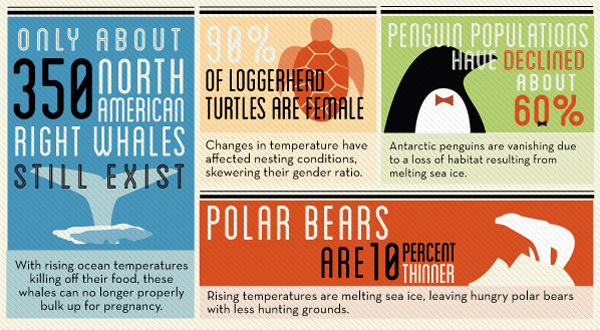
http://www.worldwildlife.org/pages/infographic-sea-turtles (SAMPLE)
LINKS: http://www.animalfactguide.com/animal-facts/
http://www.kidsplanet.org/factsheets/map.html
https://online.kidsdiscover.com/unit/endangered-species/topic/what-is-an-endangered-species
Informative Writing: Teaching Point : I can research a topic thoroughly by using multiple sources to examine a topic and convey ideas and information clearly.
WAYS WE CAN HELP SAVE THE ENDANGERED SPECIES?
WHAT ARE SOME OF MY ANIMAL’S MOST UNIQUE OR SPECIAL FEATURES?
HOW AND WHY DID MY ANIMAL BECOME ENDANGERED?
Good writers use multiple sources to research a topic. When gathering data to learn more about a chosen topic, you may use various print sources such as encyclopedias, almanacs, atlases, newspapers, or magazines. These resources may also be found online. Use dictionaries and
thesauruses to find definitions of or synonyms for words.
What is your topic? What details do you need to research?
What are some different types of sources you can use? Will you use print-based or Internet sources?
If searching for information online, what keywords will you use to search?
How can you combine research from multiple sources to support your ideas?
Choose an animal to research. Use two or three reputable sources to explore your topic. After researching, write a paragraph about your topic, paraphrasing or directly quoting the sources.
Try incorporating at least one piece of figurative language as we noticed the book does.
TRANSITIONAL WORDS AND PHRASES:
Your browser does not support viewing this document. Click here to download the document.
LEAD AND ENDING:
RELIABLE RESOURCES:
|
BRAINPOP username-PASSWORD: ps120q
COMPLETE GRAPHIC ORGANIZER : https://www.brainpop.com/english/writing/onlinesources/activity/ COMPLETE VOCABULARY: https://www.brainpop.com/english/writing/onlinesources/activity/ |
WHAT IS A WRITER'S NOTEBOOK? :
| writersnotebook.doc | |
| File Size: | 85 kb |
| File Type: | doc |
RULES AND REGULATIONS OF WRITING WORKSHOP:
:1. Save everything; it’s all a part of the history of the piece of writing, and you never you know when you might want to use it.
2. Date and label everything you write to help you keep track of what you’ve done (e.g., notes, draft #1, brainstorming).
3. When a piece of writing is finished, clip everything together, including the drafts, notes, lists, editing checklist, and peer conferencing form, and file it in your permanent writing folder.
4. Record every piece of writing you finish on the form in your permanent writing folder.
5. Write on one sides of the paper only and always skip lines or type double-spaced. Both will make revision, polishing, and editing easier and more productive for you.
6. Draft your prose writing in sentences and paragraphs. Draft your poems in lines and stanzas. Don’t go back into a mess of text and try to create order. Format as you go. Refer to your proofreading list.
7. Gets into the habit of punctuating and spelling as conventionally as you can while you’re composing; this is what writers do.
8. Get into the habit of beginning each workshop by reading what you’ve already written. Establish where you are in the piece and pick up the momentum.
9. Understand that writing is thinking. Do nothing to distract other writers or me. Don’t put your words into our brains as we’re struggling to find our own.
10. When you confer with me or with partners, use a soft voice as I use when I talk to you: whisper.
11. When you need to confer with peers, use a conference area and record responses on a peer conference form so the writer has a reminder of what happened.
12. Write as well and as much as you can!
2. Date and label everything you write to help you keep track of what you’ve done (e.g., notes, draft #1, brainstorming).
3. When a piece of writing is finished, clip everything together, including the drafts, notes, lists, editing checklist, and peer conferencing form, and file it in your permanent writing folder.
4. Record every piece of writing you finish on the form in your permanent writing folder.
5. Write on one sides of the paper only and always skip lines or type double-spaced. Both will make revision, polishing, and editing easier and more productive for you.
6. Draft your prose writing in sentences and paragraphs. Draft your poems in lines and stanzas. Don’t go back into a mess of text and try to create order. Format as you go. Refer to your proofreading list.
7. Gets into the habit of punctuating and spelling as conventionally as you can while you’re composing; this is what writers do.
8. Get into the habit of beginning each workshop by reading what you’ve already written. Establish where you are in the piece and pick up the momentum.
9. Understand that writing is thinking. Do nothing to distract other writers or me. Don’t put your words into our brains as we’re struggling to find our own.
10. When you confer with me or with partners, use a soft voice as I use when I talk to you: whisper.
11. When you need to confer with peers, use a conference area and record responses on a peer conference form so the writer has a reminder of what happened.
12. Write as well and as much as you can!
